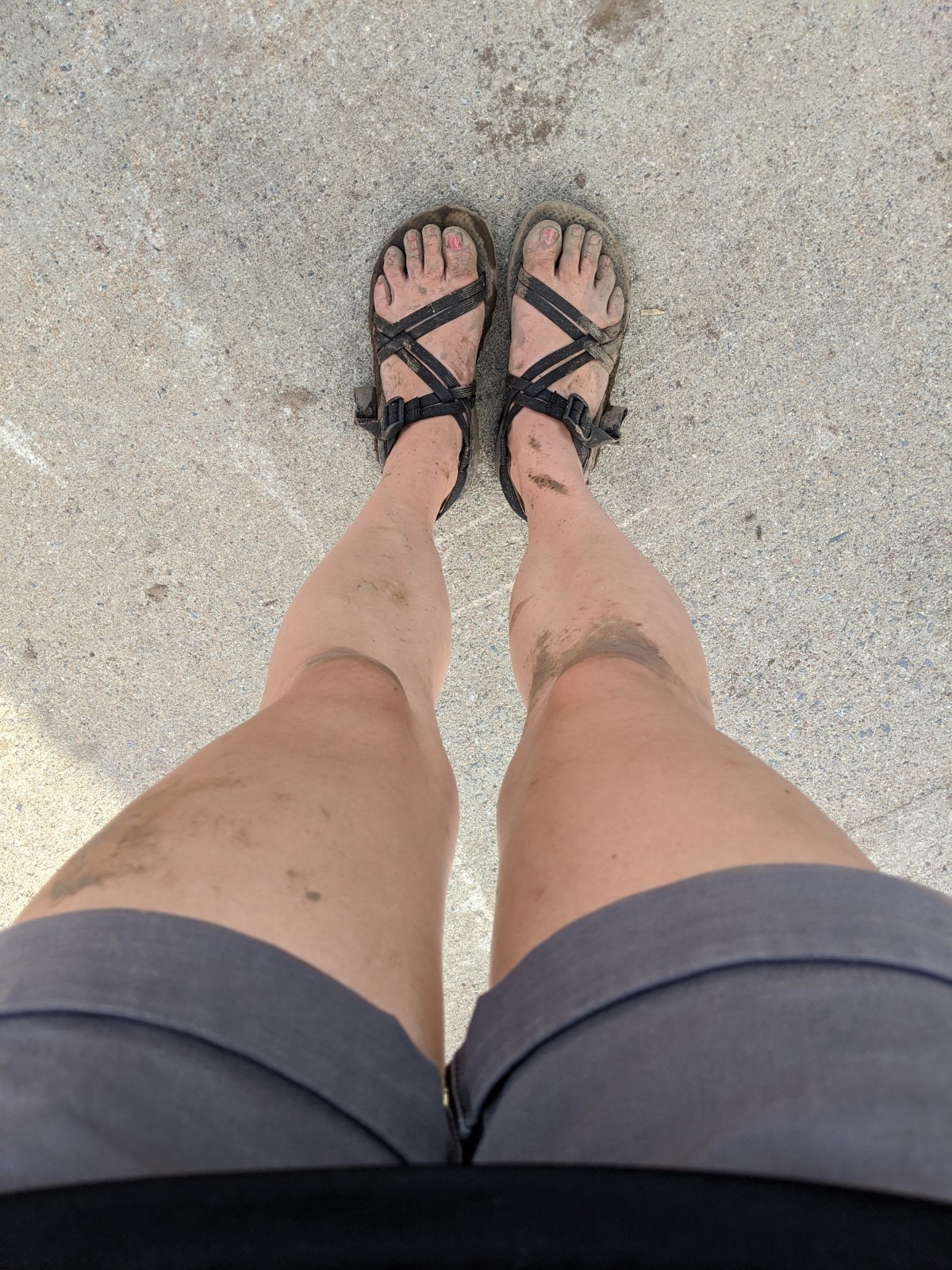
By Katie-Lyn Puffer
As the Education Coordinator, I normally spend my summers attending outreach events and festivals, and coordinating and instructing teacher professional development workshops. These events take me across Minnesota, the Midwest (and sometimes beyond!) to engage with community members of all ages. As you can imagine, this summer looked markedly different. Some events were cancelled and others were moved online, but getting outside to look for monarchs, see what I could find in the milkweed patch, and even engage in one or two socially-distanced outreach events was one way to kick the covid blues. Exploring the natural world and helping others do the same is one of my favorite activities - and one of the reasons I became an environmental educator in the first place.

The first egg of the year. Monarch eggs are tiny - only about the size of a pencil tip!

These little stem nesting bees were hollowing out last summer's stems. Did you know that Minnesota is home to an estimated 470 different species of navtive bees?! It is estimated that 90 of those bee species make their home out of hallowed stems or cavities in wood. Learn more about Minnesota's native bees from the UMN Bee Lab!

I found this 5th instar monarch in June while monitoring for monarchs at Falcon Heights Community Park outside of Minneapolis, MN. This is one of our monitoring sites for the Monarch Larva Monitoring Project (MLMP), a community science project that engages volunteers to help gather scientific data on monarchs and their habitat.

Monarchs are not the only organism that benefit from milkweed! This tiny bee enjoys drinking nectar from common milkweed flower.

I discovered this 3rd instar ready to molt in a common milkweed flower cluster behind my house and got to follow its growth over the next few days.

Here is the same caterpillar again, still hanging out in the flowers!

Here is the same monarch again, now as a late 5th instar. At this point in their life cycle, the monarch usually leaves the milkweed plant to find a safe place to hang upside down in the form of a J before a final molting, or shedding of its skin, to form a crysalis. Unfortunately, the side of my house wasn't safe enough, and this monarch was eaten by something a few days later! This is all part of a larger cycle of life. Less than 10% of monarchs survive to become adult butterflies, but because of this naturally low survival rate, female monarchs can lay 300-500 eggs in their lifetime! Check out our FAQ page for more interesting facts about monarchs.

On a bike ride with my son, we had to pause and look in the roadside milkweed patch for monarchs!

Muddy feet after a day outside at our Blazing Stars and Soaring Monarchs event with Minnesota Native Landscapes. Now that's the sign of a really great day. :)
The Monarch Joint Venture is a national partnership of federal and state agencies, non-governmental organizations, businesses and academic programs working together to conserve the monarch butterfly migration. The content in this article does not necessarily reflect the positions of all Monarch Joint Venture partners.
